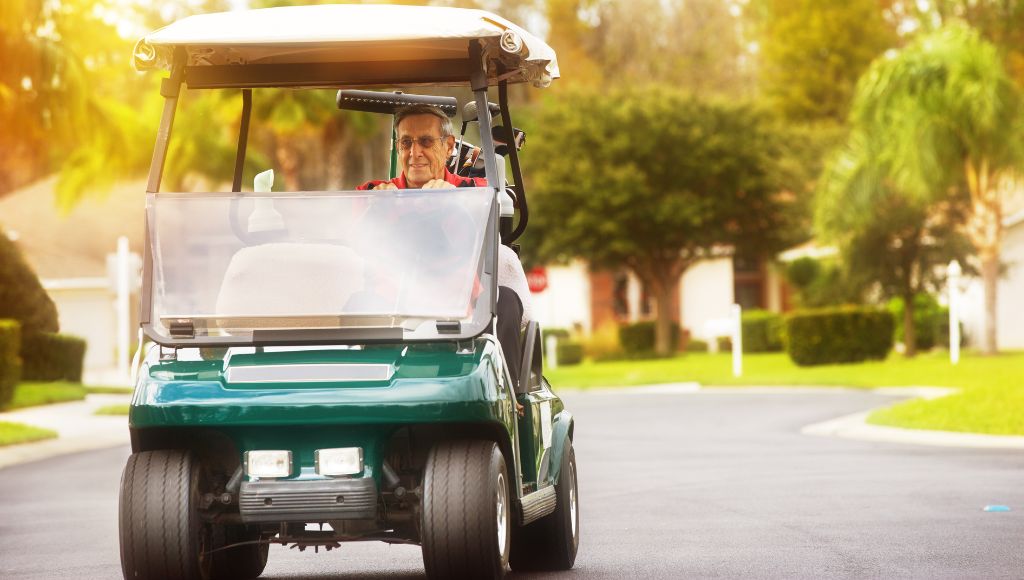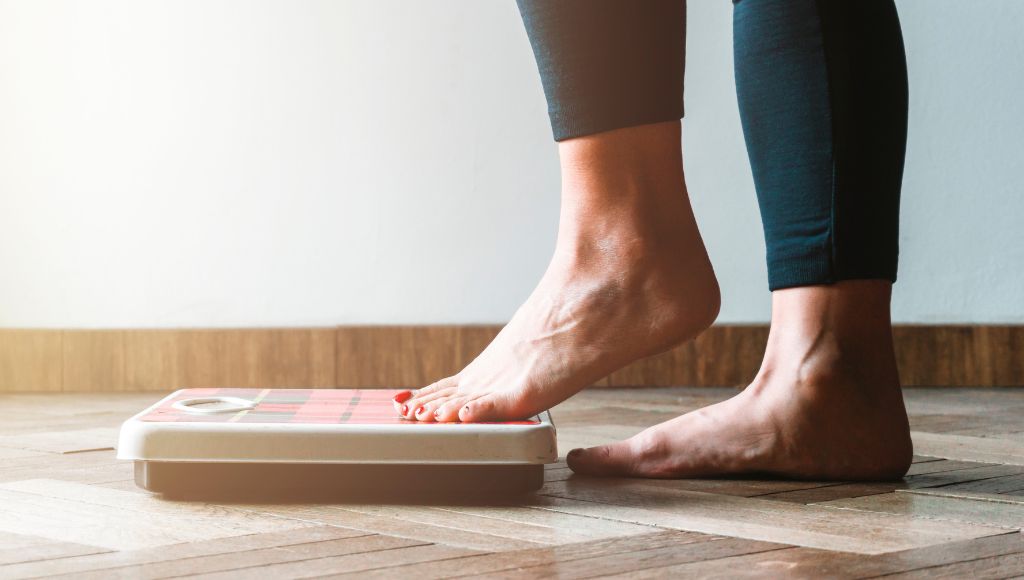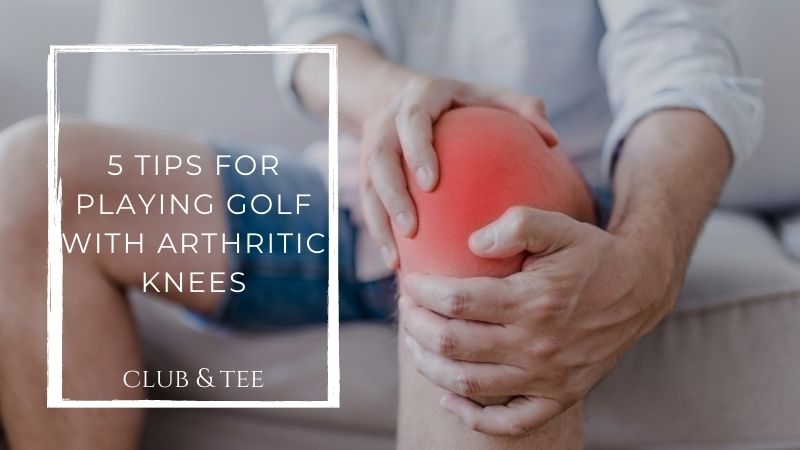Arthritis today is an extremely common condition that affects people of all ages. It is estimated that over 350 million people worldwide suffer from some type of arthritis, and knee osteoarthritis is the most common form. This can be particularly challenging if golf is one of your favorite activities.
As a golfer, if you suffer from arthritis in your knees you might think your days of walking the golf course are over and the only solution is a knee replacement. However, think again. In this article, we will provide you with 5 Tips For Playing Golf With Arthritic Knees.
Keep reading to find out how you can keep your passion for golf alive and continue playing this amazing game.
Can you play golf with arthritic knees?

Arthritic knee pain is a condition that can be caused by a variety of factors. These could include general wear and tear as the joints get older. It could also be as a result of a disorder with your immune system, or overuse from years of playing sports.
This could put repetitive stress on the knee joint causing cartilage stress, including injury to the anterior cruciate ligament (ACL) or meniscus. People who have had surgery to repair these injuries may have a harder time playing golf than those who have not.
A pilot study, published in the American Journal of Sports Medicine, found that people who had undergone meniscus surgery had less pain and better function in their knees compared to those who had not. However, it is important to note that this was a small pilot study and more research is needed to confirm these findings.
Stem cells, taken from a person’s own blood samples, have been used to treat tendonitis and arthritis in the knee, but this treatment is still considered experimental and more research is needed to confirm its effectiveness.
It is still possible to play golf with arthritic joints, although it may affect your range of motion in the golf swing. To keep golfing pain free you will have to make some adjustments to your golf game and how you play.
This could include changing your equipment, using a golf cart, adjusting your golf swing, or performing regular exercise. For people with knee osteoarthritis, it may be best to play golf on a separate day from other activities that put stress on the joints, such as running or cycling.
In addition, it may be helpful to use a golf cart for ease of movement and to use knee braces and other supportive devices to help reduce pain and improve function when walking the course. Consult with a doctor or physical therapist for personalized recommendations.
We want you to be able to play for many years to come so have put together 5 tips for playing golf with arthritic knees to help you continue playing, reduce stress and reduce pain on the golf course.
5 tips for playing golf with arthritic knees
1. Warm up
Always ensure that you complete a thorough warm-up before going out to play golf if you have knee pain. The health benefits of this before teeing off can reduce pain for all golfers, but especially for golfers with a condition such as knee osteoarthritis.
We would recommend warming up the joints and muscles before playing to prevent injury and reduce stiffness in your body. One excellent warm-up exercise for golfers with knee pain is to perform leg swings.
Simply swing the right leg ensuring that the right knee performs its full rotational movement. Then complete the same exercise with the right leg. This will warm up the joints in each knee before walking the course and help prevent further inflammation and stiffness especially in the lead leg used in the swing.
3. Use a golf cart
If you suffer from knee arthritis you might not be able to walk the course as it could cause you too much pain and lead to inflammation and swelling in your joints. Advice would recommend using a golf cart to ride on during your round as this could reduce your average pain score.
Knee osteoarthritis means that you will suffer from joint pain when walking, especially in your lead leg. To ease this pain we would recommend walking the course and occasionally using a golf cart when you feel the need, rather than a whole round walking the course. This adjustment can reduce swelling and the pressure placed on the joints and ligaments with osteoarthritis.
There is a debate about whether using a golf cart continuous versus intermittent walking, might be better for your joints. In this article by Northwestern University, they suggest that golfers should choose to walk the course, and intermittently use a golf cart to reduce the pain score in golfers with knee osteoarthritis.

3. Exercise
If you are looking to reduce stress in your joints when playing golf with knee pain, another top tip is to build core strength through regular exercise. If you work on strengthening the muscles which support a strong swing you will be able to prevent injury and reduce the acute physiological effects of arthritis.
Walking the course is a great way to get regular exercise, studies have found that golfers suffering from knee osteoarthritis spent a significant amount of time with an elevated heart rate.
However, we would also suggest low-impact activities away from the course such as swimming and cycling which can increase flexibility in the joints. Yoga is regularly discussed in arthritis forums with claims that this type of exercise promotes a significant increase in flexibility in the hamstrings and other parts of the body.
4. Use longer clubs
Professional golfers have suggested that longer golf clubs can help with some of the symptoms associated with osteoarthritis. The extra length means you will not have to bend so much when hitting the golf ball which can reduce the amount of pressure and stress on the joints.
Using longer clubs can help to generate more club head speed and increased distance requiring less rotational movement and reducing pressure on the body during the follow through.
We would recommend consulting with an expert club fitter to find the best-length golf clubs most suited to your skill level, body shape, and budget.
5. Weight management
A Northwestern University study found that a sedentary lifestyle leading to a lack of physical activity contributed to increased functional decline in patients with arthritis.
A healthy lifestyle that leads to maintaining a good weight is a great way to alleviate the amount of arthritic knee joint pain and has proven to have significantly higher health benefits. Arthritis already leads to cartilage stress and knee pain, additional weight can lead to further inflammation and swelling in the joints.
If this isn’t improved it could mean you might need a knee replacement. At its worst, it could signal the end of your golfing days on the course altogether. We would always recommend consulting with a trained physician to discuss the health benefits of managing your weight. They will carefully review your diet and lifestyle before making any changes.

FAQs
Does golf aggravate knee osteoarthritis?
Moderate exercise such as golf can help to reduce the symptoms associated with arthritic conditions such as knee osteoarthritis. If you follow our top tips and ensure to always complete a thorough warm-up before playing you will be able to play golf for many years to come.
Is golf hard on the knees?
Golf involves a significant amount of walking, therefore it can have an impact on the knee. Even after one round of walking the course golfers with knee osteoarthritis suffered knee pain. Using a ride on a golf cart can help alleviate the pain score felt when playing golf. Another tip is to use knee support which can help to provide stability during the rotational forces in the golf swing and prevent injury.
Does knee pain arthritis ever go away?
Knee arthritis is a condition that will not go away. However, there are several treatments to help reduce the pain. Knee osteoarthritis is one of the most common forms of arthritis and some people might have to have a knee replacement. However, with the support of a medical professional, they can recommend alternative ways to live an active life even with knee pain.
Please remember, these are just general tips, if you are in pain, always refer to a professional sports medicine physician, or doctor trained in physical medicine to ensure you get the best advice. This way all of the remedies and health benefits of playing golf can be discussed with a trained expert.
Final thoughts
We think the best tip to continue playing golf is to think about your diet and weight management. Obesity is proven to have a clinically significant impact on the ligaments and increases the likelihood of injury when playing golf.
The health benefits of playing golf are well known, this is especially true if you are suffering from arthritis in your knee. We hope you’ve found this article useful and enjoyed reading our 5 tips for playing golf with arthritic knees. Follow these tips to continue playing this amazing game.

